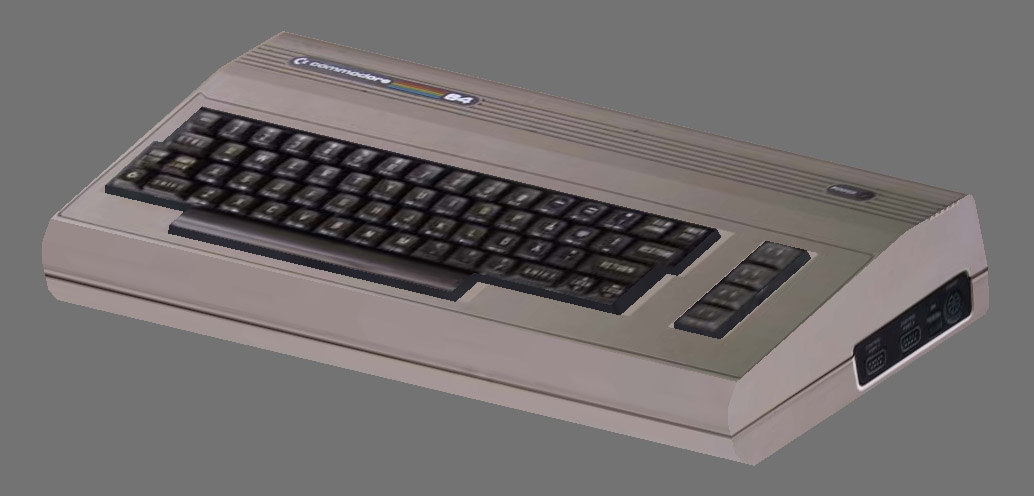Range AND COMMODORE 64
Range and C64 programming went ahead tape tapes which were embedded into information recorders (or recording devices) and could be stacked into memory by composing a direction, for example, load"". These PCs depended on a progression of sound signs which were never charming to tune in to as they were loathsome shrieking sounds. Regularly you would need to hold as long as ten minutes (for a Spectrum 128k diversion particularly) to stack when it could crash, which means you needed to re-alter the volume and begin once more. In the event of a low chronicle, the amusement tape would as a rule have a different duplicate on the opposite side.
A great many people could duplicate these diversions by utilizing a greetings fi framework with twin tape decks. By embeddings the first amusement tape in the primary deck and squeezing "play", and embeddings a clear tape in the second deck and squeezing "play and record" you could get an ideal duplicate. You could purchase tape tapes for sparing information, for example, a C15 which enables you to record as long as fifteen minutes. A few people would utilize a C90 which would enable them to store numerous amusements without a moment's delay.
In the event that you didn't approach twin tape decks, at that point you could utilize programming. On the Spectrum you could utilize something like "007Spy" which would enable you to stack the whole amusement into memory and after that back up onto a clear tape. A few amusements had distinctive methods for stacking, for example, the beating (or clicking) loaders, a strategy utilized by numerous Ocean Software recreations. This prompted the arrival of other programming equipped for handling these loaders. The normal Spectrum amusement would comprise of a short bit of code (the header), a stacking screen and the fundamental code. This is the standard loader, simple to duplicate.
At the point when the Spectrum 128k +3 was discharged it accompanied an inherent floppy plate drive. As there were just such a large number of amusements discharged on +3 plates, strategies were utilized to exchange them from tape to circle. The standard loader was simple. All you needed to do was type converge"" to get into the supervisor code and spare that to a +3 plate (save"a:program-name"). Next you would stack the stacking screen higher into memory (load "screen-name" code 30000) and spare that to a +3 circle. At long last you would do a similar thing with the fundamental code and add the heap directions to the primary header code.
For the more entangled loaders a suite of projects called "007 Trans-Master" was utilized to change over the records into the standard organization so they could be spared to +3 circles.
ATARI ST AND AMIGA
The incredible thing about the Atari ST and Amiga PCs was that you could lay your hands on several bits of free programming, no compelling reason to privateer business programming. There were numerous PDLs (Public Domain Libraries) who might convey free programming at the cost of a plate and postage, and for their dispersion work. The real programming is free and covers anything from demos to diversions and pictures to music records. There was likewise the shareware technique where you pay a little membership charge to get additional items for full forms of the product and licenceware where the PDL would offer a little commission to the first giver.
Atari ST programming was ordinarily duplicated utilizing committed circle copiers, for example, "Quick Copy" while the Amiga utilized the famous "X-Copy". Anyway a few plates were ensured and subsequently other all the more dominant replicating programming must be utilized.
Assurance METHODS
Programming distributers have utilized numerous types of creation to discourage duplicating, for example, the more entangled loaders on the Spectrum. Different strategies would require the client entering a word or letter from the manual before they could get into the amusement, or picking a progression of hues or images from their book to coordinate the ones on screen. A few diversions enable you to think you have replicated them until you have played them for such a long time and notice some terrible shock. The amusement "Shadow of the Beast" flips around the screen on specific dimensions for instance.
This lead to the ascent of Cracking Groups, for example, the acclaimed "Pompey Pirates" on the Atari ST who might hack into the amusement and evacuate the duplicate insurance. They would then discharge various amusements (hacked and stuffed) onto a solitary floppy plate which were passed around to different clients.


No comments:
Post a Comment